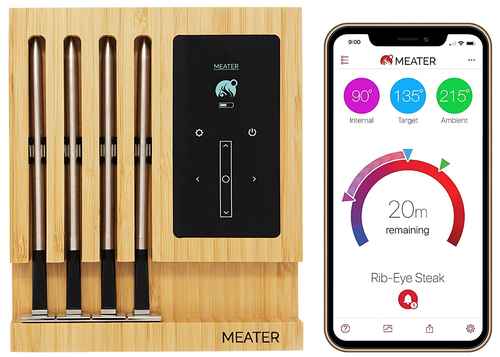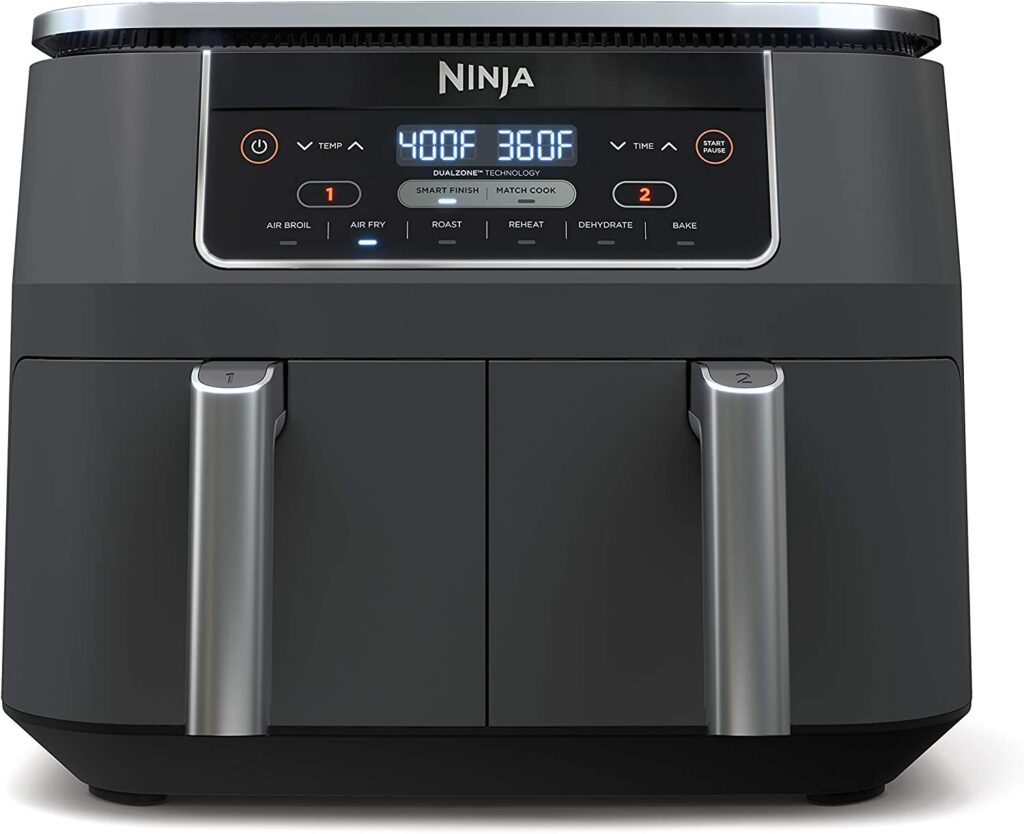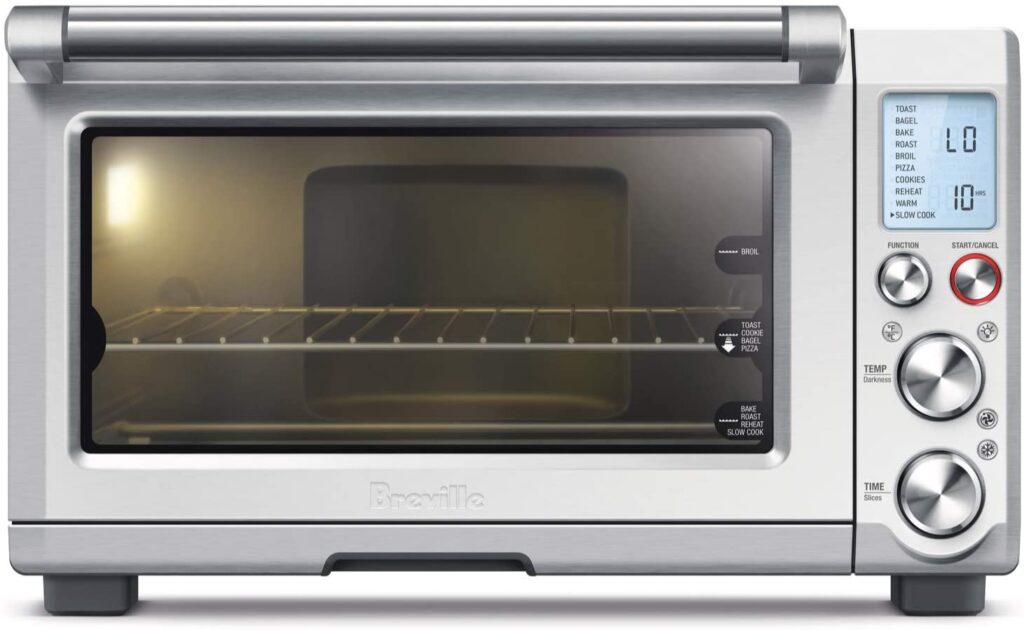How To Cook Outside Round Roast In Slow Cooker [GUIDE]
The outside round roast, also known as the round tip roast, is a cut from the rear leg of the cow. Lean yet flavorful, this cut is often overlooked due to its firm texture, which can sometimes make it tough if not cooked properly. However, when prepared in a slow cooker, it transforms into a tender, juicy, and melt-in-your-mouth meal that rivals even more expensive cuts of beef. Slow cooking allows the meat’s natural flavors to intensify, and when paired with vegetables and aromatic herbs, it becomes a comforting, wholesome dish perfect for family dinners or special occasions. Unlike roasting in the oven, which requires constant monitoring, the slow cooker offers a hands-off approach, letting you achieve rich, tender results with minimal effort.
Contents
- 1 How Long To Cook Outside Round Roast In Slow Cooker
- 2 How To Tell If It Is Done
- 3 Ingredients Needed
- 4 How To Cook Outside Round Roast In Slow Cooker
- 5 When Things Go Wrong
- 6 Expert Tips
- 7 Can I Do This Without A Slow Cooker?
- 8 Reheating Leftovers In Slow Cooker
- 9 FAQs
- 9.1 What Is An Outside Round Roast And Why Is It Good For Slow Cooking?
- 9.2 How Should I Prepare The Outside Round Roast Before Placing It In The Slow Cooker?
- 9.3 What Liquid Should I Use In The Slow Cooker For An Outside Round Roast?
- 9.4 How Long Should I Cook An Outside Round Roast In A Slow Cooker?
- 9.5 Should I Cover The Roast While Cooking In The Slow Cooker?
- 9.6 How Can I Tell When The Outside Round Roast Is Done?
- 9.7 Can I Add Vegetables To The Slow Cooker With The Outside Round Roast?
- 9.8 How Do I Make A Gravy Or Sauce From The Slow Cooker Drippings?
- 9.9 Can I Cook A Frozen Outside Round Roast In A Slow Cooker?
- 9.10 How Should I Store Leftovers From A Slow-cooked Outside Round Roast?
How Long To Cook Outside Round Roast In Slow Cooker
Cooking times for an outside round roast in a slow cooker depend on both the weight of the roast and the cooking temperature setting. As a guideline:
- Low Setting: Approximately 8-10 hours for a 3-4 pound roast.
- High Setting: Approximately 4-6 hours for the same weight.
Patience is key here. Unlike quick cooking methods, slow cooking allows the connective tissues in this lean cut to break down slowly, producing a tender roast. Attempting to cook it quickly at high temperatures without monitoring may result in a dry, chewy roast. Always check the internal temperature for safety and doneness rather than relying solely on time.
How To Tell If It Is Done
Determining doneness goes beyond simply looking at the meat. Here are the ways to gauge whether your outside round roast is perfectly cooked:
- Internal Temperature: Use a meat thermometer. For medium-rare, the internal temperature should reach 130-135°F (54-57°C), medium 140-145°F (60-63°C), and well-done 150-160°F (66-71°C). For slow-cooked roasts, many prefer pulling it at 145-150°F for a tender, juicy texture.
- Fork Test: Insert a fork into the thickest part of the roast. If it slides in and out easily and the meat begins to flake, it is done.
- Juices: Slice slightly into the roast; if the juices run clear, not pink or bloody, it indicates thorough cooking.
Remember, the slow cooker allows residual heat to continue cooking the roast even after removing it, so resting it for 10-15 minutes before slicing is essential.
Ingredients Needed
To achieve a rich and flavorful outside round roast in a slow cooker, the following ingredients are recommended:
- 3-4 pound outside round roast
- 2 tablespoons olive oil or vegetable oil
- 1 large onion, sliced
- 4-5 garlic cloves, minced
- 3-4 carrots, peeled and cut into large chunks
- 3-4 celery stalks, cut into large pieces
- 1-2 cups beef broth or stock
- 1 teaspoon salt (adjust to taste)
- 1 teaspoon black pepper
- 1 teaspoon dried thyme
- 1 teaspoon dried rosemary
- 2 bay leaves
- Optional: potatoes, parsnips, or mushrooms for added flavor
The combination of aromatic vegetables, herbs, and broth ensures the roast remains moist while imparting deep layers of flavor throughout the cooking process.
How To Cook Outside Round Roast In Slow Cooker
- Preparation: Pat the roast dry with paper towels to remove excess moisture. Season generously with salt, pepper, thyme, and rosemary.
- Searing: Heat olive oil in a skillet over medium-high heat. Sear the roast on all sides until browned. This step is optional but adds a rich, caramelized flavor.
- Layering: Place onions, garlic, carrots, and celery in the bottom of the slow cooker. Position the seared roast on top of the vegetables.
- Adding Liquid: Pour beef broth around (not over) the roast to maintain the seasoning on top. Add bay leaves.
- Slow Cooking: Cover and cook on low for 8-10 hours or high for 4-6 hours. Resist lifting the lid frequently, as this releases heat and prolongs cooking.
- Finishing Touches: Once done, remove the roast and let it rest. You can strain the cooking liquid, reduce it slightly on the stovetop, and serve as a gravy alongside the roast.
When Things Go Wrong
Even in a slow cooker, mistakes happen:
- Dry Roast: Likely overcooked or insufficient liquid. Reduce cooking time slightly next attempt, and ensure there is at least a cup of liquid.
- Tough Meat: Often undercooked or the slow cooker was set too high. Slow cooking on low is always preferred for lean cuts.
- Bland Flavor: Perhaps not enough seasoning or herbs. Season generously before searing and consider adding a splash of Worcestershire sauce or soy sauce for umami.
Patience and proper liquid levels are the keys to avoiding these pitfalls.
Expert Tips
- Sear the roast before slow cooking to enhance flavor and color.
- Add vegetables later in the cooking process if you prefer them firmer, as slow cooking can make them very soft.
- Rotate the roast halfway through cooking to ensure even cooking.
- Use a thermometer to avoid overcooking; outside round roasts can go from tender to tough quickly.
- For a richer flavor, marinate the roast overnight in herbs, garlic, and a touch of vinegar or wine.
Can I Do This Without A Slow Cooker?
Yes, an outside round roast can be cooked in the oven or on the stovetop:
- Oven: Roast at 325°F (163°C) in a covered Dutch oven with vegetables and broth for 2.5-3 hours, or until tender.
- Stovetop: Simmer on low heat in a heavy pot or Dutch oven, covered, for 3-4 hours, turning occasionally.
The key principle remains slow, low, and moist heat to tenderize the meat.
Reheating Leftovers In Slow Cooker
Reheating leftover roast in a slow cooker preserves moisture better than the microwave:
- Slice or leave the roast whole.
- Place in the slow cooker with a little beef broth or cooking juices to prevent drying out.
- Heat on low for 1-2 hours until warmed through.
- Avoid high heat, which can overcook and toughen the meat.
FAQs
What Is An Outside Round Roast And Why Is It Good For Slow Cooking?
An outside round roast comes from the rear leg of the cow and is a lean, moderately tough cut of beef. It is ideal for slow cooking because the low, steady heat helps break down the connective tissue, making the meat tender and flavorful over time.
How Should I Prepare The Outside Round Roast Before Placing It In The Slow Cooker?
Trim any excess fat, pat the roast dry with paper towels, and season it with salt, pepper, and your preferred herbs and spices. Optionally, searing the roast in a hot skillet before slow cooking can enhance the flavor and create a deeper color.
What Liquid Should I Use In The Slow Cooker For An Outside Round Roast?
Common liquids include beef broth, stock, water, wine, or a combination. Adding liquid helps maintain moisture during cooking and creates a flavorful base for gravy or sauce. Usually, 1 to 2 cups of liquid is sufficient for most slow cookers.
How Long Should I Cook An Outside Round Roast In A Slow Cooker?
Cooking time depends on the size of the roast and slow cooker setting. Generally, cook on low for 8-10 hours or on high for 4-6 hours. Low and slow is preferred for optimal tenderness.
Should I Cover The Roast While Cooking In The Slow Cooker?
Yes, keeping the lid on traps steam and heat, ensuring even cooking and helping the roast stay moist. Avoid lifting the lid frequently, as this can significantly extend cooking time.
How Can I Tell When The Outside Round Roast Is Done?
The roast is done when it reaches an internal temperature of 145-160°F (63-71°C) for medium to medium-well doneness. Additionally, the meat should be fork-tender and easy to shred if desired.
Can I Add Vegetables To The Slow Cooker With The Outside Round Roast?
Yes, adding root vegetables such as carrots, potatoes, onions, and parsnips is common. Place firmer vegetables at the bottom so they cook evenly and absorb the juices, while more delicate vegetables can be added later in the cooking process.
How Do I Make A Gravy Or Sauce From The Slow Cooker Drippings?
After removing the roast and vegetables, pour the remaining liquid into a saucepan, bring it to a simmer, and thicken with a slurry of cornstarch and water or a roux. Season to taste before serving.
Can I Cook A Frozen Outside Round Roast In A Slow Cooker?
It is not recommended to cook a frozen roast in a slow cooker, as it may remain in the temperature ’danger zone’ too long, increasing the risk of bacterial growth. Thaw the roast in the refrigerator before cooking for best results.
How Should I Store Leftovers From A Slow-cooked Outside Round Roast?
Let the roast cool slightly, then store in airtight containers in the refrigerator for up to 3-4 days. For longer storage, freeze portions for up to 3 months. Reheat gently to avoid drying out the meat.



